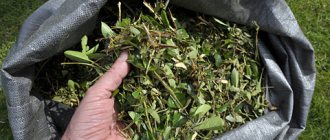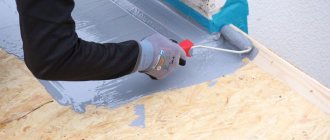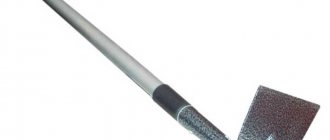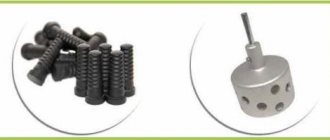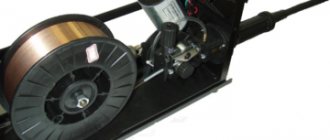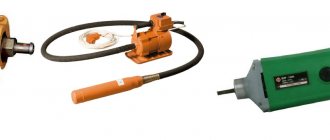Landscape construction is an effective way to improve the territory of a suburban or summer cottage and make it unique. Many owners of private houses use various tricks, from designing paths to green hedges. Today, the most popular method of arranging the territory is do-it-yourself gabions: the step-by-step instructions are so simple that you can do the construction of the structure yourself.
A gabion is a structure made of a metal frame (mesh) filled with stones or other material
What are gabions
Initially, gabions were wicker baskets filled with earth, which were installed on fortification ramparts to protect against enemy bullets and cannonballs. Modern gabions are made according to the same principle, but instead of wicker they use a metal mesh on a welded frame, and instead of earth - large crushed stone, fragments of natural stone or pebbles, and less often - other fillers.
A standard gabion is a rectangular mesh box filled with stones. From such boxes, connected in a certain order, borders and fences, retaining walls for slopes, various architectural forms are made - benches, pool bowls, artificial pond beds, etc. They are widely used to strengthen slopes and embankments, river beds and canals, as well as for the construction of various structures.
The use of gabions allows one to relatively quickly and inexpensively improve the territory of parks and recreational areas, erect structures to protect against talus and ground collapses, and strengthen the bottom and banks of reservoirs.
Types of structures
Interesting decor with logs and candles
There are several types, each of which has its own scope of application.
Box-shaped structures "Jumbo"
Welded “Jumbo” system reinforcing a highway embankment
Box-shaped structures "Jumbo"
The most popular designs are those that resemble boxes or rectangular boxes stacked on top of each other. If the structure is too long, partitions (diaphragms) must be placed inside the box; the approximate step is 1 meter. This gabion fencing is made of soft mesh or steel rods welded into a cage shape.
The first is attached to a rigid frame, and the second itself has sufficient rigidity. The “Jumbo” type is well suited for mounting a fence, fence, table or bench stands, stairs, supports. It assumes uniform load distribution, strength, and clarity of shape is the key to aesthetic appeal.
Flat structures “Reno mattress”
This is what a mattress variety looks like
Flat structures “Reno mattress”
Their outlines resemble a mattress - rectangular, wide, low (up to 35 cm). Diaphragms are placed inside the cage to evenly distribute the load. "Reno mattresses" are made from rigid galvanized wire.
Cylindrical "Bags"
Cylindrical view
Cylindrical "Bags"
The gabion resembles a sausage; due to its shape, it lacks stiffeners and partitions. It is more flexible and pliable, which is convenient for giving unusual shapes. The bags can be laid on uneven terrain without fear of uneven pressure on the soil.
Decorative designs
Decorative mesh frames are sold ready-made
Decorative designs
They are created to decorate a site, give it zest and self-expression. Most often, gabions are used to create fancy labyrinths, flower beds, benches, fences, and garden figures. For the latter, a welded frame is made from thick wire, and for the remaining elements, you can purchase a sheet metal mesh and lay it in the desired direction.
How to make a patio at the dacha with your own hands: a variety of design, finishing and arrangement options (85+ Photo Ideas & Video)
Pros and cons of gabions
Among the advantages of gabion structures, the following should be mentioned first of all:
- high reliability and durability - heavy stones held by a metal mesh are extremely difficult to move;
- flexibility, thanks to which gabions are not afraid of seasonal soil movements that destroy the concrete monolith;
- water permeability, which allows you to save on drainage arrangements;
- cheapness and accessibility through the use of the most inexpensive materials - ordinary steel mesh and stone fragments;
- versatility, providing many options for using structures;
- aesthetics, the ability to fit gabions into almost any landscape;
- ease of assembly, especially if you use ready-made mesh frames;
- no need for subsequent care and maintenance.
If we talk about the disadvantages, then gabions are not recommended for the construction of structures whose height exceeds 12 meters, since in this case the lateral loads may be higher than the weight of the stone from which the wall is composed. Thickening the wall will lead to a sharp increase in the volume of work, due to which the structure will become economically unprofitable. But on a personal plot or summer cottage such work, as a rule, is not required.
Gabions in landscape design: photo gallery with description
Along with the fact that gabions can be created with your own hands according to the step-by-step instructions provided, they can be used not only as fences, but also as full-fledged decorations on the site. The undoubted advantage of such structures is a combination of practicality (fencing, soil protection from erosion), durability and aesthetic appeal.
The use of these products in garden design is limited only by the user’s imagination, since there are a large number of options - from traditional to unusual. Here are some ideas and photos for inspiration.
Gabion fences
A fence made from such structures is a classic design that reliably protects the house and area from dust and noise. Such fences are created both from gabions themselves and in combination with wood materials.
Gabion fencing
From similar structures you can make small fences that organize the space inside the site. They will give the entire area a neater, more attractive look.
You can start with the fact that gabions are great for decorating an entrance area or terrace. If the house is located on a high enough hill, then the entire area next to the stairs can also be designed in the form of steps.
Gabions, therefore, can be used not only as a fence, but also as a basis for a wooden fence. Moreover, if the height is quite high (from half a meter), then it is better to further strengthen the structures with concrete columns and finish the top with wood or slabs.
Classic options are creating internal borders along the path. If you put basalt tiles or plywood on top, you get a full-fledged bench.
Gabion benches
Finally, such structures can be used to make full-fledged seats, as shown in the photo.
If you stylize the entire recreation area as a walking platform and add lighting, you get a rather interesting option.
Lights and wiring are laid directly into the stones during construction.
Benches are also created using wooden slabs.
It is interesting that such products even penetrate into the design of premises - if you want to diversify the furniture and interior of your apartment, you can try to start an experiment with gabions.
Gabion flower beds
Gabions, unlike tires and other materials, will serve as an excellent option for flower and decorative beds, since the soil lying among the stones is not subject to any erosion (destruction) - neither from moisture nor from the wind. For flower beds, it is best to use stones of lighter shades, against which the greenery and flowers themselves will contrast especially well and decorate the garden area.
The labyrinth design deserves special attention. This is a truly beautiful flower bed that can liven up a space. As a rule, they are located in the center or in the corners of the garden, maintaining symmetry.
An interesting option is portable structures that will serve as full-fledged flowerpots. Due to their originality, they will serve as a kind of calling card of the garden plot - directly above the stones you can place a layer of soil in which to plant flowers or ornamental plants.
To make these types of gabions with your own hands, you can use the technology given above in the step-by-step instructions, and take, for example, this drawing as a basis.
By modifying the shape, you can achieve designs of various types.
PAY ATTENTION Gabion beds are especially suitable for flowers that do not like excess moisture - the liquid will flow over the stones, as a result of which the soil will not receive excess moisture.
Gabion structures are a new direction in landscape design. They combine practicality, reliability and visual appeal. In addition, such products are cheaper than conventional fences due to the fact that all components (stones and mesh) are inexpensive. That is why gabions are becoming increasingly popular among owners of country houses.
And finally, a video selection of additional options for using gabions on the site.
Box-shaped, or “jumbo”
As the name implies, the mesh body is a rectangular box no more than a meter high and one to two meters wide. The length, depending on the tasks, varies from one to six meters. Inside, at a distance of no more than a meter from each other, jumpers are installed that prevent the walls from moving apart under the weight of the bursting stones.
Most often, massive box-shaped gabions are used to construct retaining walls that hold soil on slopes, preventing it from sliding down. In addition, they are used to strengthen the coastline of canals and rivers if the channel has a high steep bank.
The need for a foundation and drainage
A low retaining wall made of gabions should be installed on compacted soil, which will act as a base. Before starting work, the site must be cleared and leveled. If the height of the structure is no more than 1 m, a foundation should be provided. It should be made of flat gabions. A backfill of sand and gravel is provided for them. The foundation can also be poured with concrete. Quite often it is impossible to do without drainage at the base. In order to stabilize the soil, geotextiles can be placed under the gabions. This material is used when laying mattress elements.
Mattresses or mattresses
This is the name given to flat frames whose height is no more than 30 cm. They are shaped like spring mattresses for beds, which is why they got this name. They are used to strengthen the soil on gentle slopes, as well as for laying the beds of canals and rivers.
The mattresses are laid closely on the slope, connected to each other and secured to the ground with long anchors. A thin layer of fertile soil is poured on top and grass is sown. After some time, the roots of the grass cover penetrate between the stones, serving as additional fastening material. Such a slope will not crumble and will not require repairs or renovations for many decades.
Materials for making boxes
Today it is not difficult to purchase ready-made boxes for gabions made of mesh and steel bars, but in order to save money, as well as to produce structures of unique shapes and sizes, it is worth trying to make them yourself. For this you will need:
- reinforcing rolled or sheet welded mesh;
- reinforcing bars for the manufacture of a rigid frame and anchors securing the structure in the ground;
- steel wire for fastening gabions together;
- paint to protect metal from corrosion.
Streck mesh reinforcement cell 10x10mm, 1x10m roll=10m2
In addition, you will need pliers to bend the wire and wire cutters to cut it, as well as metal cutting scissors to cut the rolled mesh. To create products of complex shapes, you need a welding machine and, of course, at least minimal ability to weld metal. It will be very good if you have a stapler for working with thick staples, which will significantly simplify the process of fastening mesh parts together. If you don’t have this tool, it doesn’t matter: wind the wire around a thin tube to create something like a spring, then use it to twist the parts.
The gabion mesh must be strong to support the weight of the stones. This is especially important if you plan to install large jumbo boxes over a meter high on your site. The mesh thickness and other characteristics are given in a special document - GOST R52132-2003. Please note that the gabion parameters indicated in it are designed for the construction of large-scale hydraulic structures.
When making small structures for a private farmstead, the strength requirements will be much less stringent. The wire diameter can remain within 2.5-3 mm. The wire for twisting individual parts into a single structure must be the same diameter as the wire for the mesh. To ensure that decorative gabions retain their presentable appearance for as long as possible, the frame is made of galvanized wire, or better yet, of polymer-coated wire. If you cannot find a suitable material, after assembling the box, you can paint it yourself in any color of your choice.
Wire 0.8mm 50m copper
Preparing everything you need
It is not recommended to start work alone. For manipulations you will need:
- containers for gabions;
- knitting wire;
- stone aggregate;
- mount;
- anchors;
- shovel;
- hammers.
A gabion stapler can be a tool for fastening parts. It can be pneumatic or mechanical. Such devices reduce the time spent on work. Instead of knitting wire, staples in the form of rings are used to fasten the meshes. They are made from wire with a diameter of 3 mm. The coating can be a zinc-based layer. This material comes in a tape that is installed in the stapler.
If the construction of a retaining wall made of gabions will involve manual connection of elements using wire, it should be wound with a snake. You need to leave a distance of 10 cm between the turns. The process requires labor and time, but will save money. You can determine the required number of staples and wire taking into account the weight of the containers.
Materials for filling boxes
When choosing a stone to fill the mesh, you should be guided by the following requirements.
- Dimensions. The size of the debris should be no less than twice and no more than five times the size of the grid cell. Stones that are too small will fall out, and stones that are too large will leave a lot of empty space. So, for a mesh with 30 mm cells, you need to take stones no smaller than 60 and no larger than 150 mm in size.
- Water resistance. As a filler, you need hard rocks - granite, limestone, sandstone, quartzite, basalt, etc. You can take coarse crushed stone or rounded pebbles. Fragments of gypsum are not suitable, since in the rain they will get wet and float, forming an ugly whitish puddle under the box.
- Stone color. It all depends on your preferences. Many people choose a plain stone - for example, gray granite or yellowish sandstone. But you can also take multi-colored minerals to get a motley bright wall.
You don't have to limit yourself to stone. Other materials look no less impressive in gabions - fragments of ceramic tiles or red bricks, massive pieces of glass, wooden blocks, etc.
Advantages of gabion structures
In order to make sure that gabions really deserve attention and can be used to decorate a site, you should understand the main advantages that are typical for this type of structure.
- Gabions are very easy to make. There is no need to use complex construction equipment, additional people or tools. Although this question largely depends on the dimensions of the structure.
- Gabions do not require any special care or maintenance throughout their entire service life.
- The structure has a high degree of reliability and durability, which is achieved through the use of high-quality materials in the manufacture of gabions.
- The use of such structures, compared to many other landscape structures, allows for significant savings on material and labor resources.
- If you follow the rules for the manufacture of gabion structures, and also use high-quality material, they will have an extremely long service life - up to a hundred years inclusive. Moreover, they never lose their attractiveness and neat aesthetic appearance.
- The absence of any clear standards regarding the shapes and sizes of the structure, which makes it possible to create structures of completely different shapes, dimensions and areas of application.
- Despite the fact that they are most often used as barrier structures, gabions have excellent air and water permeability. Thanks to this, the maximum effect of environmental friendliness of the constructed structures is achieved. That is, the buildings in no way have a negative impact on the vegetation growing on the site, and due to the excellent air permeability, normal growth of greenery is ensured.
- The internal part of the structure is not fixed in any way and remains in a free state, so the likelihood of an increase in hydrostatic pressure is minimized.
- It is easy to assemble. Therefore, even one person can create gabions and erect a landscape structure.
- The material used for laying in sections of the structure does not react in any way to soil subsidence. If this happens, then the stones only slightly change their position, and the structure changes its shape, while the integrity of the structure remains the same.
- Grass and other vegetation grow well through the structure, which gives it uniqueness and strength without compromising its quality characteristics.
- As a filler for metal boxes, you can use completely different materials of unusual colors and shades, and if necessary, they can be replaced. This allows you to create just such a composition that will harmoniously fit into the overall design of any site.
Gabion structures act as a drainage system and support at the same time, which allows you to protect the soil from wear and mechanical damage for a long time.
Making a simple wall
The simplest option for using gabions in a summer cottage is all kinds of walls and straight borders. Before starting assembly, select the area where the structure will be installed, measure it and calculate the required amount of mesh based on the desired dimensions of the fence. Follow this procedure:
- Preparation. Clear the area of soil from vegetation. Carefully level the area, cutting off even small bumps and filling in the recesses. The base must be perfectly level, without the slightest slope. Select soil to a depth of about 10 cm, form a sand cushion in the recess and compact it well. Cut pieces of mesh equal to the sides and tops of the boxes using side cutters or tin snips.
- Assembly. Drive four reinforcing bars into the corners of the proposed gabion, leaving a part above the ground equal to the height of the future gabion. Attach the side parts to the rods and connect them by wrapping the wire around them using pliers. Install jumpers inside the box to prevent the walls from bulging outward.
- If required, attach the following ones to the first gabion, repeating the above steps with each subsequent block.
- Filling. Lay the stones in layers, first fill the lower tiers of each gabion, then lay the next layer and so on. Optimal laying is obtained if the stones differ in size by two to three times - this allows them to be laid as tightly as possible.
- Place the lids on top and secure with wire. The gabion structure is ready!
Using the algorithm described above, create walls and fences of any length.
Gabions on a welded frame
If you want to assemble a large structure from massive gabions arranged in several tiers, you need to make strong frames for them from angle steel or reinforcing bars. The frame can be rectangular, trapezoidal, cylindrical, etc. If you don’t have a welding machine and the skills to work with it, it doesn’t matter, order the production of frames from any welder.
After the frames are ready, attach the bottom and side parts of the steel mesh to them using wire or special staples. Then prepare the place for installing the structure, as described above, and fill it with stones one by one, starting from the bottom “floor”. After filling, install the frames of the next tier on the bottom row, fasten with wire and fill with stones.
Valuable qualities of bulk structures
Gabion structures have many advantages:
- they are easy to erect and just as easy to dismantle;
- can be disassembled and moved to a new location if necessary;
- look aesthetically pleasing and are widely used for decorative purposes;
- They are very strong, durable, successfully perform their protective functions during landslides and floods, and also reliably hide the territory from prying eyes if the structure is high enough. At the same time, the structures are breathable;
- You can easily hide garden hoses and pipes between the stones and lay wiring;
- environmentally friendly - this is one of the important qualities of gabions. Such structures do not harm the environment.
Even after the mesh collapses, the retaining structures will retain their shape for an additional 90 years.
